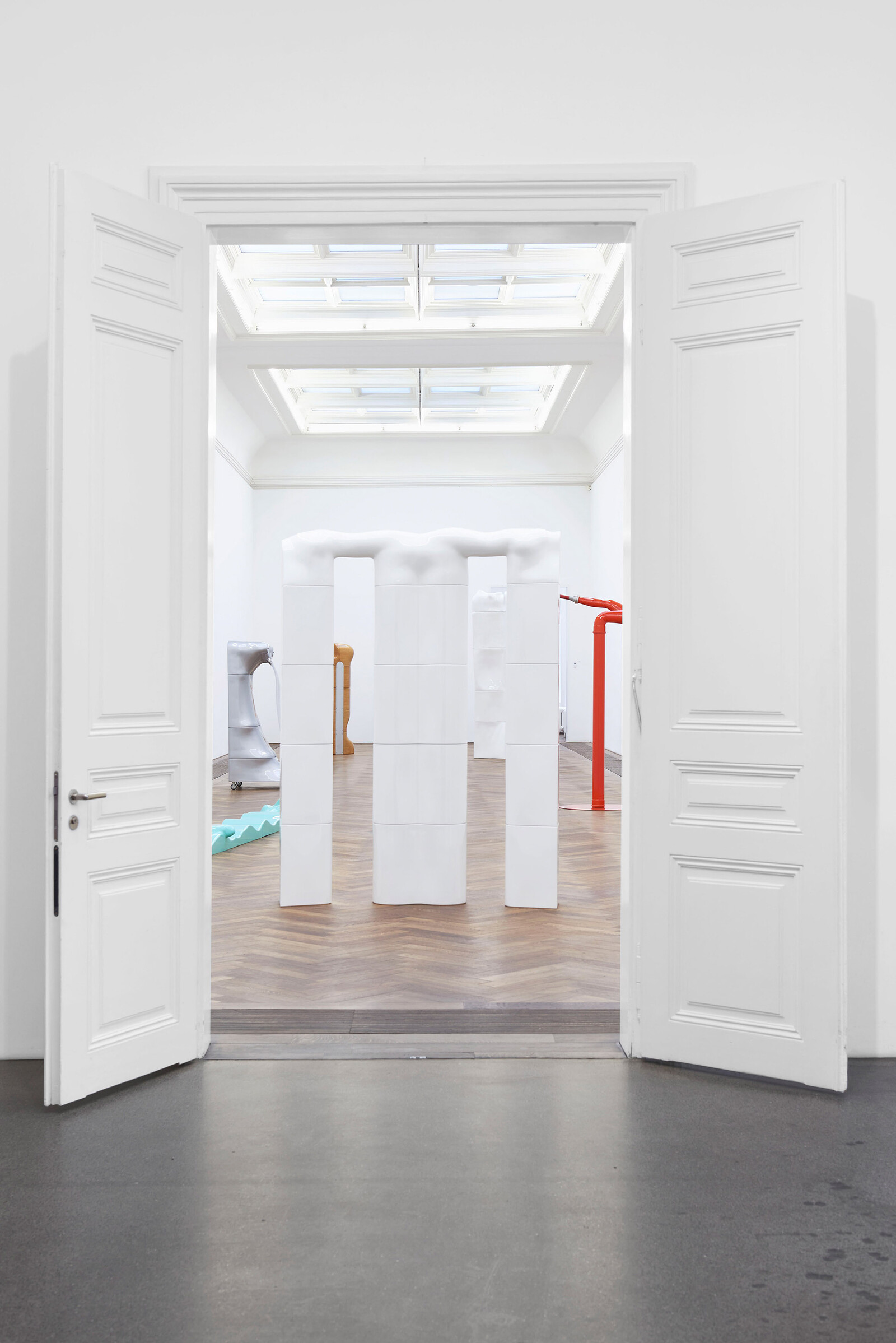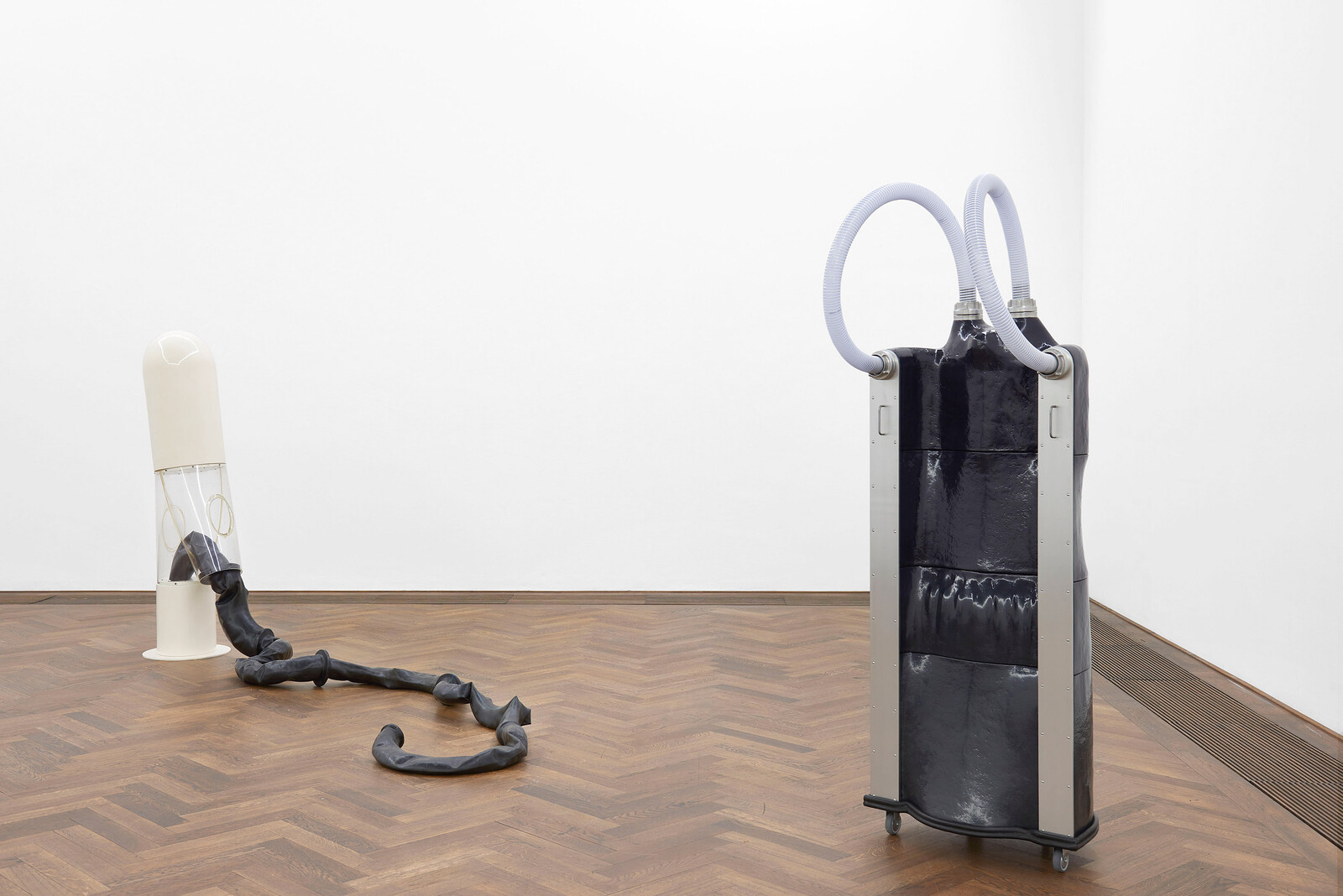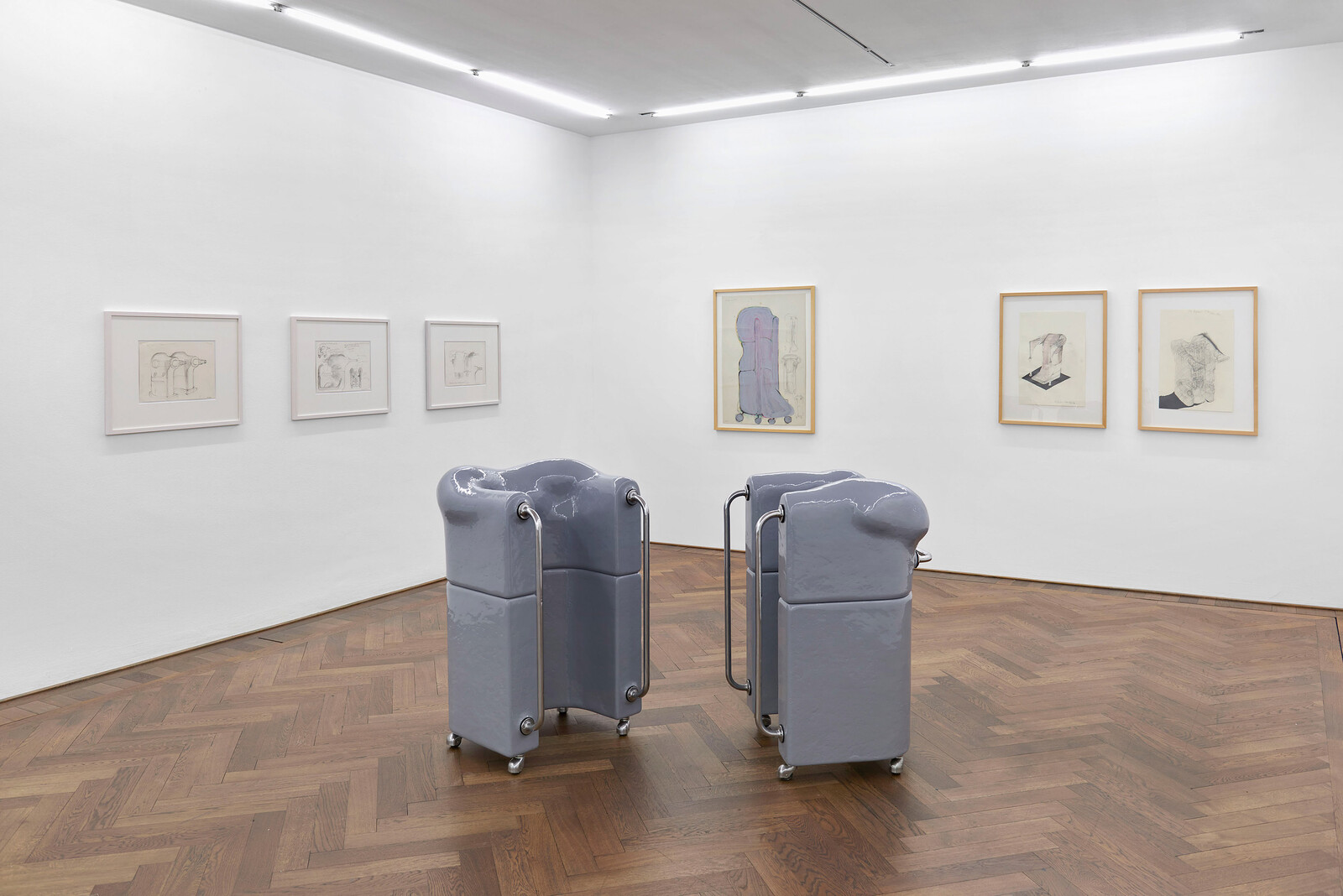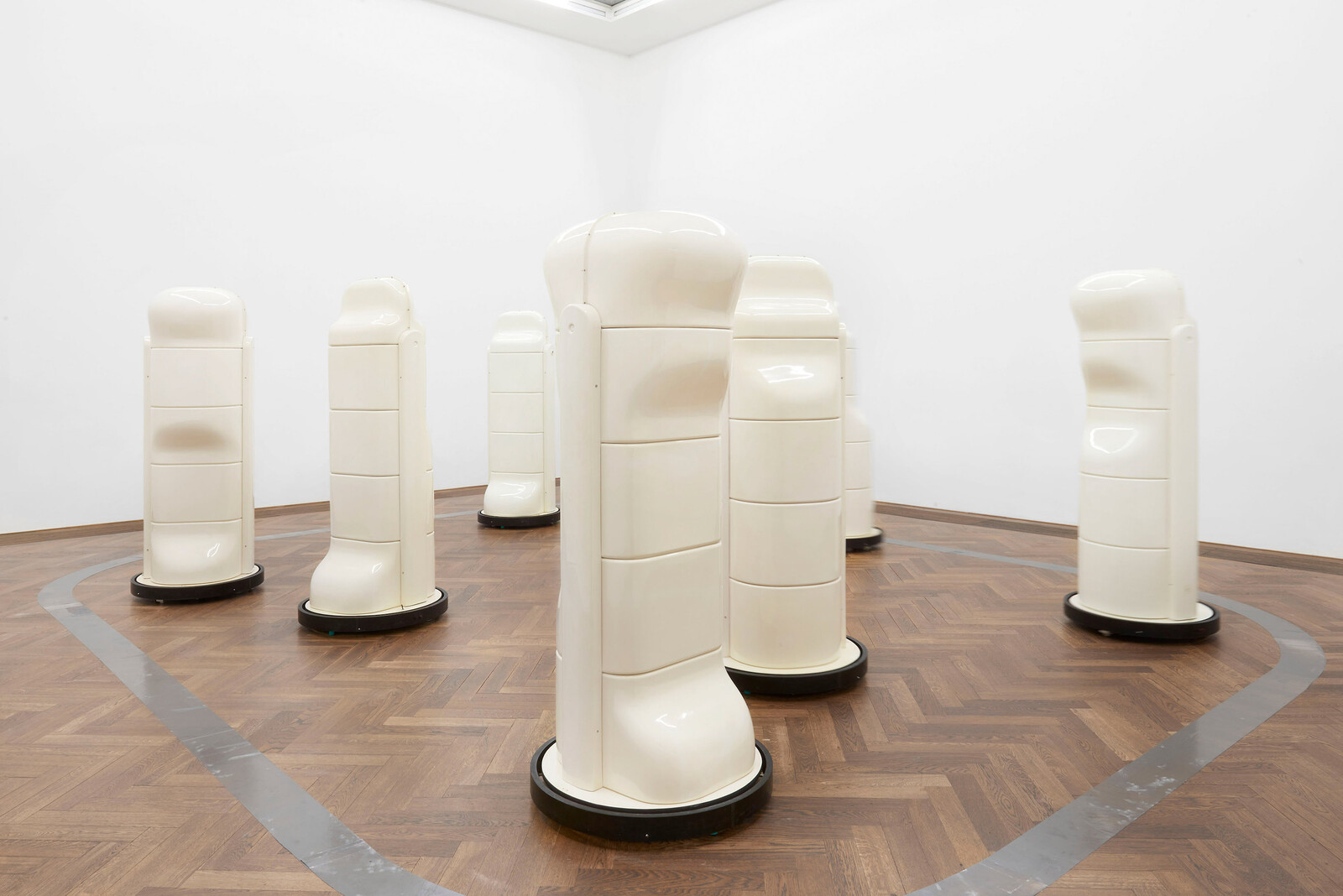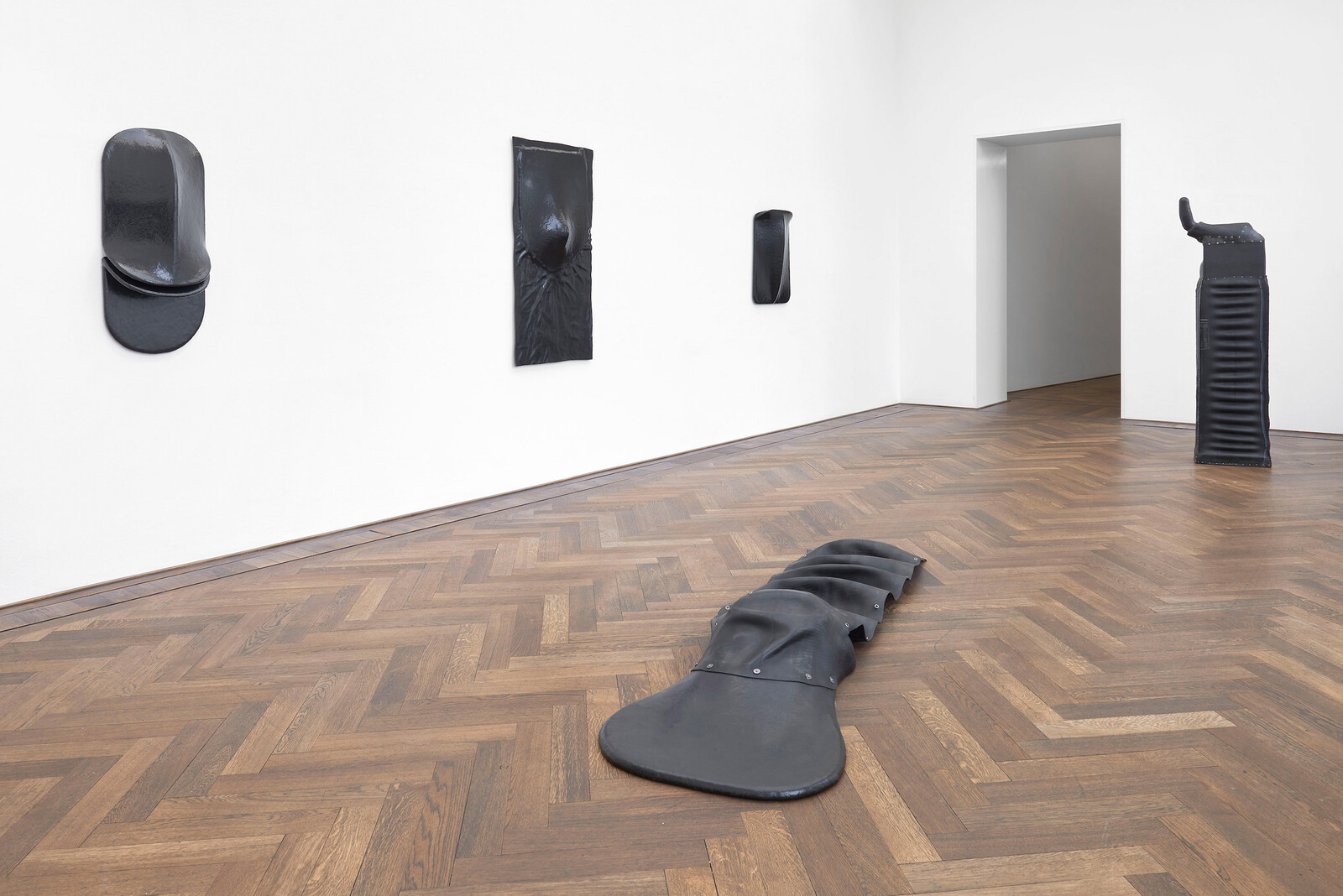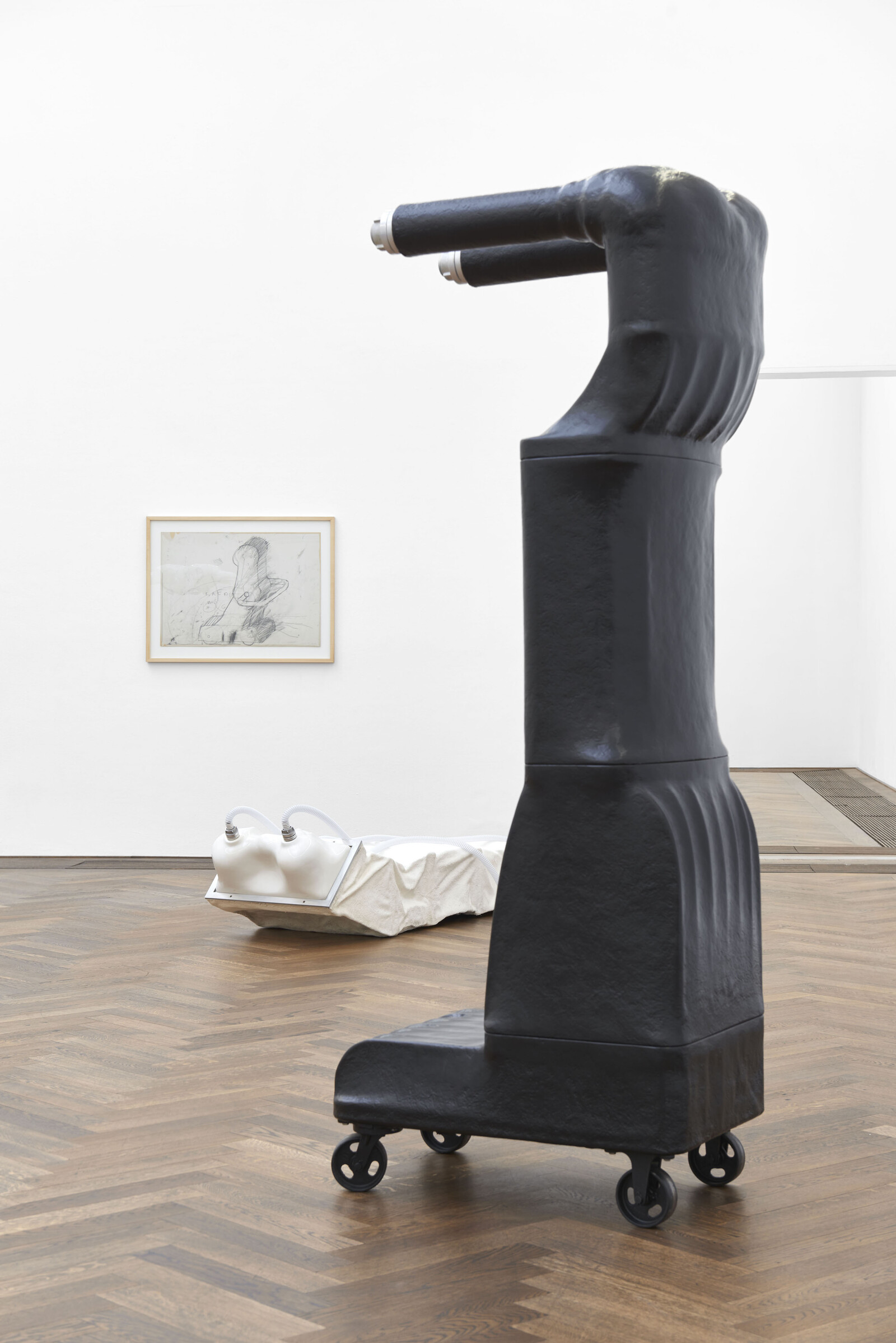At the entrance to Joachim Bandau’s Basel exhibition stands Großes weißes Tor [Large White Gate] (1969/1970), a trio of tall, shiny white columns, each sprouting buffed shoulders and arms that conjoin with its neighbors. Born in Cologne in 1936, Bandau’s childhood was marked by World War Two. He determined to be an artist at 13, after a visit to a Paul Klee exhibition, and went on to study at Kunstakademie Düsseldorf, just ahead of Gerhard Richter and Imi Knoebel. Nonetheless, he grew up in the shadow of the figurative sculpture with which the National Socialists underpinned their credo of racial superiority—like Karl Albiker’s strapping athletes that still welcome visitors to Berlin’s Olympic Park—and began to counter this mechanical perfection in his own work. The anthropomorphic columns of Großes weißes Tor make unconvincing titans: the arms might just be thighs; the bulges don’t swell where they ought to. And the structure is modular, easily assembled and just as easily tidied away. It’s a collaged acropolis for a time of jerky social reconfiguration.
The initial mood of this selective retrospective, a survey of Bandau’s Nichtschönen [Non-beauties] from 1967 to 1974, is black humor. The Nichtschönen are generously proportioned, fiberglass-reinforced polyester forms, sometimes with pockmarked surfaces, though mostly smooth and shiny, monochrome black, white, bright orange, and other colors. Under their skin, mannequin limbs form protrusions, carelessly arranged. Ophelia, badewassergrün [Ophelia, Bathwater Green] from 1967 is a rippling, minty, four-section tomb arranged on the ground, the eponymous heroine so “incapable of her own distress”—in Gertrude’s words—that this time she drowns with feet upended. Often appearing to be functional objects, some sculptures are mounted on castors, and many are plumbed with shower hoses or heads. Transplantationsobjekt VI (Kölner Spritze) [Transplantation Object VI (Cologne Syringe)] (1968) aims an orange high-kick into the air, resembling from afar an automotive robot, until you see the high-pressure water couplings at its narrow end. Military spectacle meets civilian protest—the fun is fading.
The exhibition is arranged over five galleries: in the second are black works including rigid wall reliefs, and rubbery works arranged on the floor such as Zungenfuss [Tongue Foot] (1973/76), which has an absurdly large duck bill and a ruched inner tube tail. Next, three sculptures including Zwei graue Sesselfiguren [Two Grey Chair Figures] (1971) are surrounded by working drawings and visualizations of completed works, illustrating bodies inhabiting the structures; then the mobile Georgische Tänzer [Georgian Dancers] (1971), an installation of seven cream-colored, rounded columns, each about two meters tall, which move about, congregating and separating, at the whim of their whirring motors and sensory inputs. (This reads now in relation to robotic vacuum cleaners, but prefigured them by some three decades.) At the furthest extent of the show the materials are more brittle, the threat more explicit: Beinprosthesen-Sarg [Leg Prosthesis Coffin] (1972) is a cream-colored tablet out of which protrude two prosthetic, worn, leather-strapped legs, one foot propped as if the figure has just fallen or is attempting to rise. The Weißes Duschtor [White Shower Gate] (1969) is lower than the gate with which the show opens, featuring two pipe side columns that meet a torso-based crossbar just above a small person’s head height, in which are embedded four showerheads—it harks back to gas chambers disguised as showers, and forward to decontaminating sprays.
After this discrete body of work (following which he abandoned polyester, not least due to its toxic effects) Bandau, now eighty-five, continued to produce and exhibit for several decades more. It’s atypical for Kunsthalle Basel, where the focus lies on contemporary work, to take an historical perspective on sculpture. The exhibition text cites the works’ relative obscurity and continuing relevance. And it wasn’t hard to trace a line from the 1960s to today: if Bandau was once inspired by World War Two, rotten post-war West German politics, Vietnam war protests, and the nascent practice of organ transplants, there are equivalents in recent proxy conflicts, protests for (and against) civil liberties, the rise of the far right, or cryogenics. But Covid-19 has changed everything. For the past year, we have consulted scientific barometers obsessively and spread rumors virally, the pendulum swinging between mistrust of and adherence to medical advice. We have relied ever more on delivery services and had ever less human contact. We retreated into small domestic spaces, yet relinquished our privacy to employers to an unprecedented degree. Now returning jubilant, but still atomized, to galleries, what we find there looks different. Bandau’s ergonomic, hermetic bodies have companion-like dimensions, and though their practical trappings suggest purpose, what that purpose is remains cryptic. They might be life-saving prosthetics or monstrous machines—and suspicion is the order of the day.

